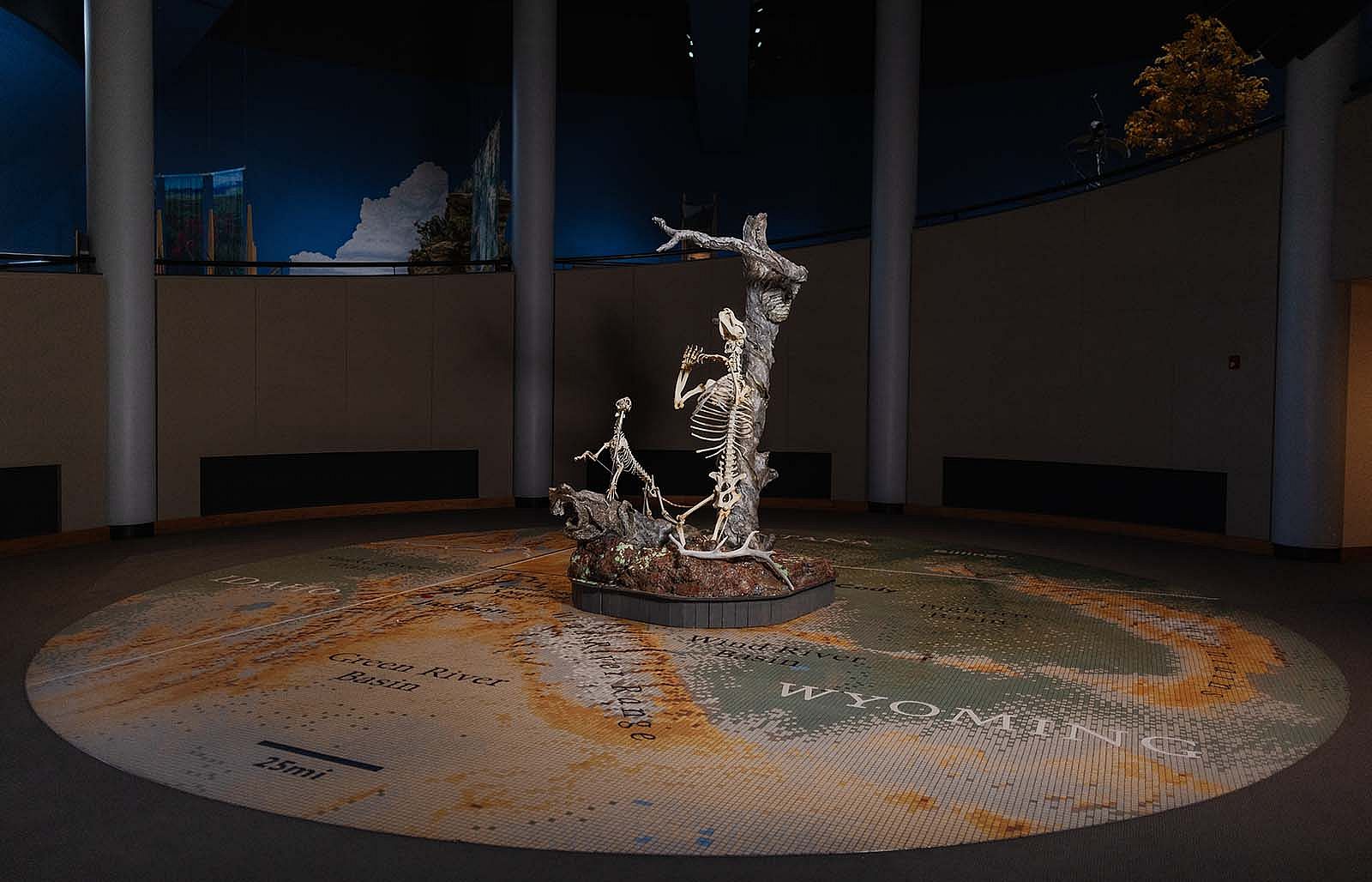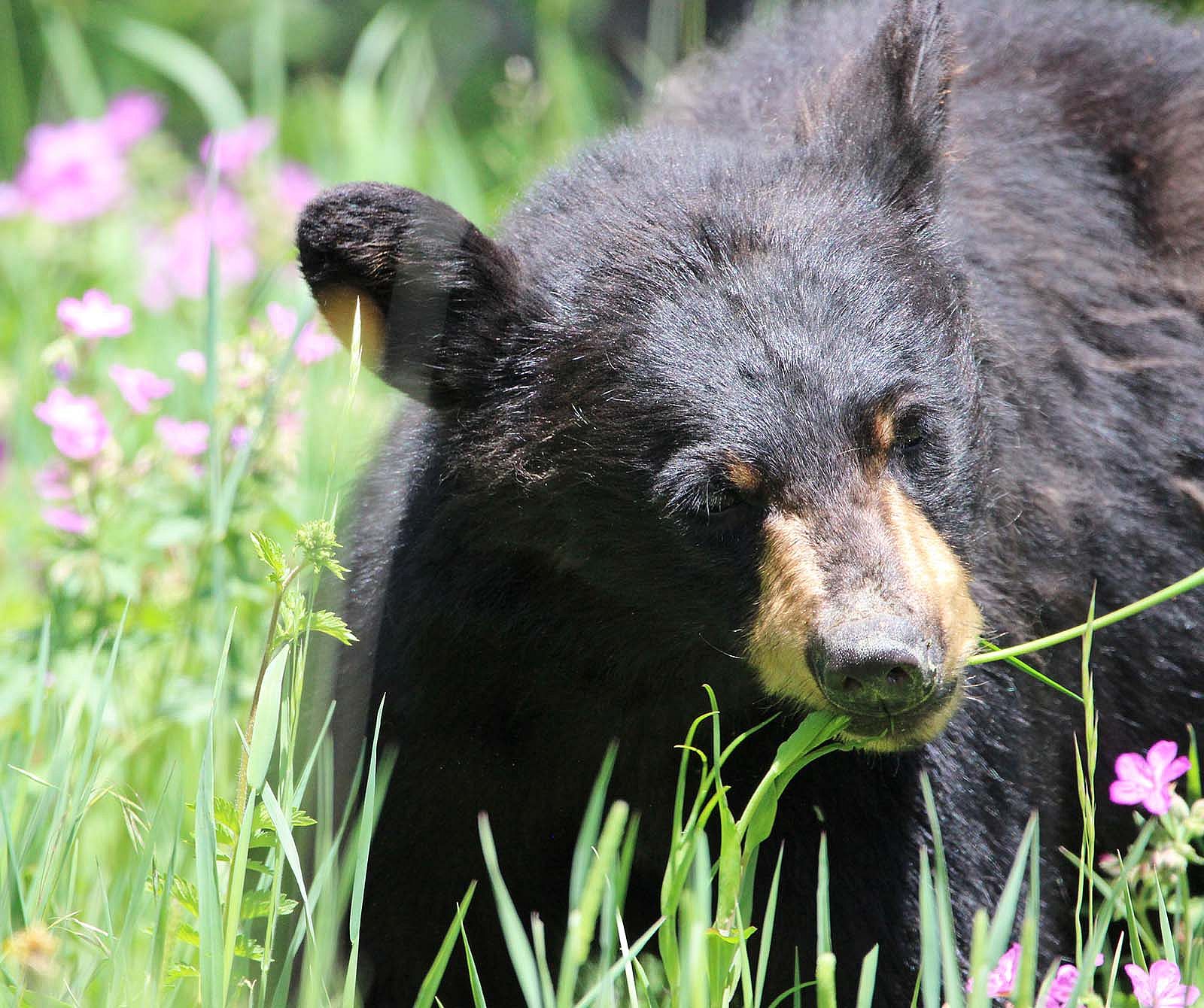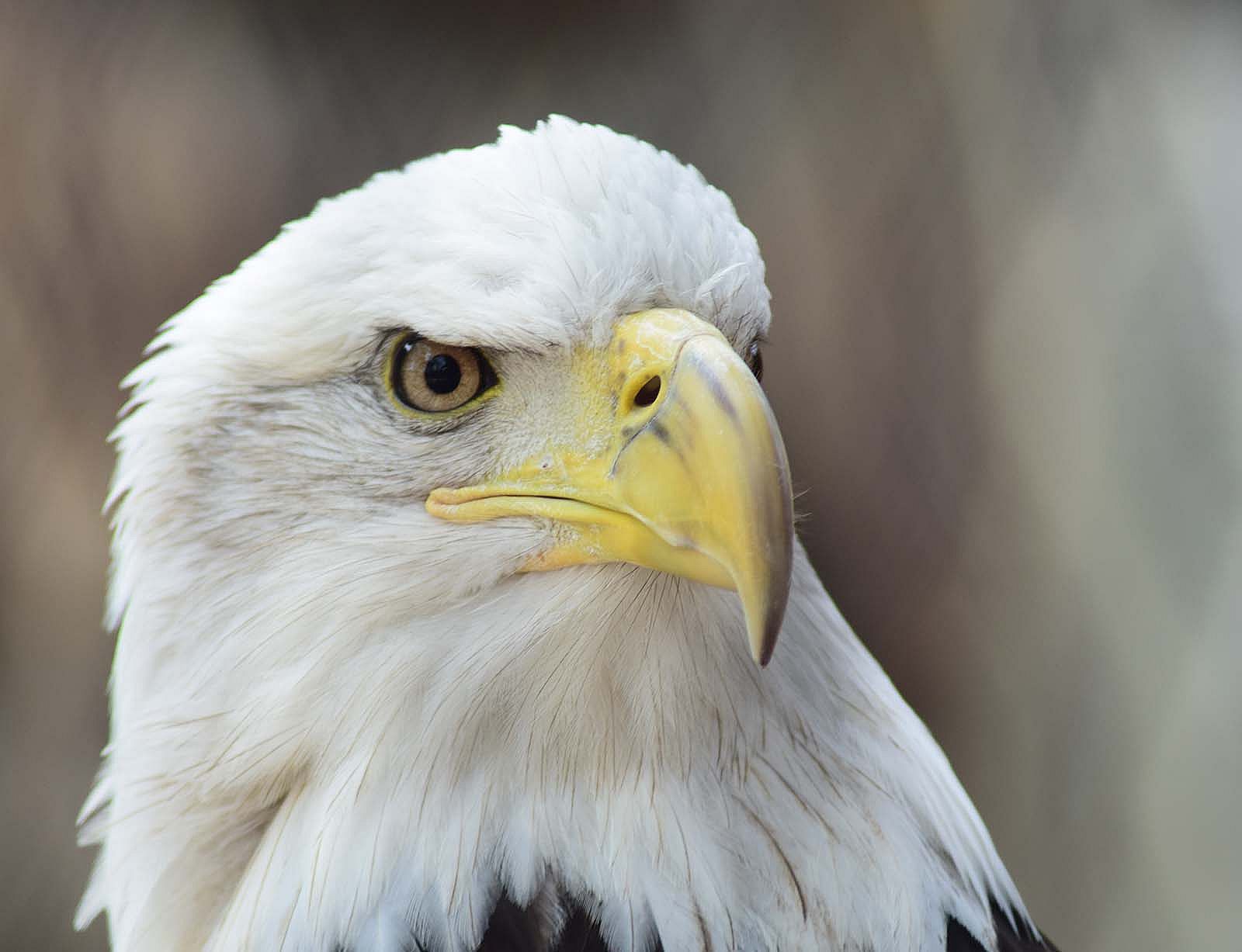
Our Draper Natural History Museum staff answers these frequently asked questions (F.A.Q.) about topics and animals of the Greater Yellowstone Ecosystem (GYE).
A: Natural history museums, like the Draper, build collections of specimens to preserve a record of biodiversity so scientists can study species and their environment over time. Specimens range from biotic (living) to abiotic (non-living) objects and frequently include rocks, minerals, fossils, skins, skeletons, feathers, skulls, plants, and more! Natural history museums use specimens and collections to interpret the natural world through immersive, hands-on exhibits and educational programs. Often exhibit text is derived from the discoveries and findings of researchers!
A: Buffalo and bison are used interchangeably in the American West to describe Bison bison, the American Bison. Bison is the scientific name and the term you will see used in the galleries of the Draper. Bison are a separate species from true buffaloes, such as the Cape buffalo or water buffalo. How did the names get mixed up? While there is disagreement on the precise origin of the mix-up, there are two leading hypotheses. When French fur traders first encountered the bison, they called it “le boeuf”, the French word for beef. Historians believe this term eventually became “buffalo.”
A: When wildlife poses a perceived or realized threat to human safety or property, sometimes the difficult decision is made to lethally remove these animals from the landscape if they cannot be safely relocated somewhere else. In those instances, the animal either goes to a repository where it is used for education and research, such as a museum, or it is buried in a landfill. The Draper Natural History Museum is a dedicated repository for the biodiversity of the Greater Yellowstone Ecosystem and a salvage-based institution meaning, with rare exception, we do not capture animals from the wild for our collection. Instead, we rely on relationships with state, federal, and non-profit rehabilitation facilities to build our collection of natural history specimens. The Draper also maintains state and federal salvage permits that allow the possession and transportation of native wildlife. Window strikes and wildlife hit by vehicles, for example, would fall into this category.
A: There are several fantastic museums and institutions within the Intermountain West that focus almost exclusively on paleontology and the diversity of prehistoric life. The Tate Geological Museum in Casper, Wyoming Dinosaur Center in Thermopolis, and Museum of the Rockies in Bozeman have extensive collections that reflect this time in Earth’s history. The Draper Natural History Museum is the only natural history museum of its kind to focus on the species and ecosystems of the Greater Yellowstone Ecosystem.
A: Mountain goats (Oreamnos americanus) are native to Alaska, the Canadian Rockies, Montana, Oregon, and Idaho. Mountain goats were introduced to the Absaroka Mountains in the 1940s and 50s. More closely related to antelopes than goats, mountain goats are white with short black horns. Unfortunately, mountain goats can carry diseases that pose a threat to bighorn sheep (Ovis canadensis). Bighorn sheep are the largest wild sheep in North America. In the Absaroka Mountains, bighorn sheep were the primary food source of the Mountain Shoshone. Unlike mountain goats, bighorn sheep males have large curving horns.
A: Grizzly bears are omnivores, meaning they eat both plants and animals. During the spring when bears emerge from hibernation, they will often feed on other animals that died over the winter, the young of elk and deer, and nutrient-rich spring plants such as dandelions and horsetail. As spring progresses, they begin to feed on fleshy root vegetables such as biscuit root. As calves grow, they become less vulnerable to predation, grizzly bears turn their attention to scavenging other kills. In the Greater Yellowstone Ecosystem, grizzly bears are known to feed on army cutwork moths during late summer. A grizzly bear will eat up to 40,000 of these fatty insects in a single day. During the fall, bears enter “hyperphagia.” In hyperphagia, bears are focused on eating as much as possible to prepare for torpor, a form of hibernation. They will eat berries and are on the lookout for nutrient-rich whitebark pine nuts. During all seasons, bears will scavenge kills by wolves and human hunters.
A: During the winter months, grizzly bears enter their dens where they will remain for approximately the next five months. During this time, grizzly bears experience long periods of sleep and a heart rate lowered from 40 – 50 beats per minute to 8 – 19 beats per minute. Over the winter, bears live off the layer of fat built up during the summer and fall. Unlike some hibernators, such as bats, grizzly bears do not experience a significant drop in body temperature. Keeping their body temperature an average of 12 degrees Fahrenheit within their typical range means they can quickly react to disturbances.

A: The Draper is a salvage-based museum. The decision to add specimens to our exhibits depends on the condition of the animal when received and how well the specimen may work within the existing exhibit footprint and space constraints. The Draper specimen collection is opportunistically developed. Carnivores and omnivores, like black bears, are transferred to the Draper Natural History Museum by the Wyoming Game and Fish Department or in some instances, donated to the museum by a patron. There are currently three black bears in the museum. Two of the black bears are COYs (cubs of the year), while the other is a yearling black bear. In Wyoming, female black bears can grow to be about 150 pounds in size, and males typically average less than 300 pounds. While on all four feet, a black bear is about 3 feet high. When standing upright, a black bear can reach heights of 5 – 7 feet.
A: Mountain bluebirds (Sialia currucoides) can be found in the Greater Yellowstone Ecosystem during the summer months and into the fall. We do not currently have any bluebirds on display in the museum, but this is one species we will add to the galleries when we get the right specimen.
A: Grizzly bears can have anywhere from one to four cubs, but two is typical. The mother cares for her cubs for up to three years before separating from her cubs. She can reproduce the next year.
A: Obsidian is an igneous rock that results from the eruption of felsic lava which is over 63 percent silica and a temperature of around 1,600 degrees Fahrenheit. Felsic lavas are typically very viscous (slow and thick) and explosive. Yellowstone has a lot of felsic lava exposures, many of which contain black to tan-colored obsidian. The color variations are due to the presence of materials other than pure silica, which otherwise would be clear. Obsidian is formed when the felsic lava cools so fast the minerals do not have time to form crystals.
A: Elk have two teeth made of ivory. Ivories were once tusks used by males during the rut (breeding season) to compete for females and by both sexes to protect themselves against predators. Over time, large antlers were selected for over the tusks and the tusks gradually receded. The tusks are known as a vestigial trait, meaning due to natural selection they have become smaller or are no longer used. Although they are no longer used, old habits die hard. Elk will still pull back their gums in a characteristic “sneer” that once showed off their tusks.
A: The black and white bird with a long tail that you see in the Mountain-Meadow biome above the coyote is a black-billed magpie (Pica hudsonia). Magpies are a member of the crow family and eat insects, plants, as well as meat from carrion, the young of other birds, and rodents. The gardens here at the Center are popular with magpies but remember not to feed them as they are wildlife.
A: The American pronghorn (Antilocapra americana) is the fastest terrestrial mammal in North America. Sometimes referred to as an antelope, pronghorn can reach speeds up to 65 mph! For context, mule deer can run 45 mph, grizzly bears can run 35 mph, bison can run 30 mph, and cottontail rabbits can run up to 18 mph, while the average human can run 6 mph. Even at top speeds, the fastest human runner (Usain Bolt) still only reached 27 mph. Pronghorn far outpace any predators on the landscape today, but that was not always the case. The pronghorn evolved on a landscape with the American cheetah (Miracinonyx inexpectatus). While we do not know how fast this extinct cat could run, living cheetahs in Africa can run up to 75 mph.
A: Bison (Bison bison), the largest terrestrial mammal in North America, is one of the last megafauna to survive the Pleistocene extinctions approximately 10,000 years ago. Although bison living today are much smaller than bison from the Pleistocene, they are still quite large. Adult bison tend to range in weight from 1,000 – 2,400 pounds and stand anywhere from 5 to 6.5 feet tall.
A: Many kinds of rock are rich in the element iron. If the rocks are exposed to air and moisture the iron in them is altered just like the iron in the frame of your old bike laying out by the barn for years in the elements. Plants produce oxygen gas, oxygen reacts with the iron to form iron oxide, or rust, which has a reddish hue. The Chugwater Formation, one of the red layers of rock you see around Cody, built up slowly from sediments deposited by rivers and other terrestrial environments far from the oceans. It was exposed to oxygen for long periods of time so the iron in it oxidized, not just the iron exposed on the current exterior you see now.

A: The majority of our birds can only be seen during our scheduled programs. Folks who miss those programs, though, can visit our Bald Eagle, Jade, in her exhibit located in the Braun Garden. Dos and Don’ts of interacting with Jade:
Find out more about the Draper Museum Raptor Experience at centerofthewest.org/raptors.
A: There is no set time for feeding Jade. She is typically fed approximately 30 minutes after the last program of the day, but times vary.